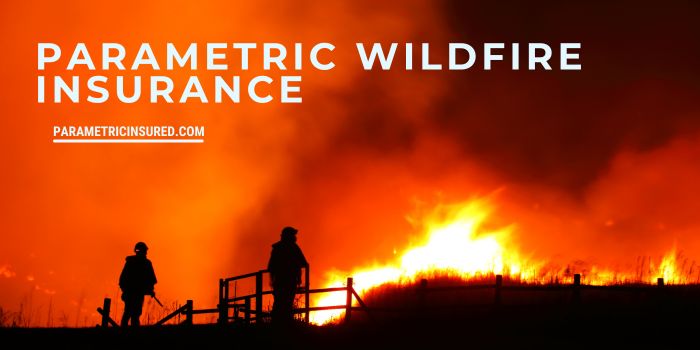Wildfires and related insurance coverage considerations for impacted industries involve understanding both operational and legal landscapes. Wildfire season every year burns millions of acres across the United States. While wildfire season had typically been between May and November depending on the region, questions remain about whether that time frame still holds. The summer months were historically considered the worst for wildfires because of heat, dryness, gusty winds, and thunderstorms producing lightning, a significant ignition source. Although wildfire statistics in terms of the number of fires and acres burned have fluctuated over the past ten years, the issue is now at the forefront of the news cycle, particularly due to the specific risks faced by electric utility companies.

Parametric Wildfire Insurance Coverage
Many states are experiencing larger and more frequent wildfires. Current wildfire reports can span New Jersey, Pennsylvania, West Virginia, North Carolina, South Carolina, Florida, and parts of the Midwest. For electric utilities, safely and reliably serving customers while mitigating wildfire risk has become a year‑round obligation. Recent January fires in Los Angeles killed 29 people and are considered among the most destructive in California history, causing total estimated economic losses exceeding $250 billion.
Wildfires are no longer confined to California or the Pacific Northwest. States on the East Coast, Midwest, and elsewhere now face increased wildfire activity. Lists of active wildfire zones and red‑flag warnings show the nationwide scale, even during historically low‑risk months like March.
Litigation Landscape
Over the past decade, wildfire‑related lawsuits, especially against regulated electric utility companies, have increased. Plaintiffs often focus on the applicable industry standard what a reasonably prudent business should do under the circumstances. California’s practices are frequently used for comparison, with plaintiffs arguing other states’ utilities should meet similar standards. Claims tend to focus on two theories: ignition (where a utility is blamed for starting the fire) and exacerbation (where its actions or inactions worsened the damage).
Earlier California lawsuits used inverse condemnation, similar to strict liability, because it allowed recovery of attorney’s fees. Recently, plaintiffs are favoring negligence and tort claims, which let them introduce testimony about other utilities’ safety measures and drive larger jury awards or settlements.
Non‑utility defendants have also been targeted, including water companies accused of inadequate supply, contractors whose equipment sparked fires, and renewable energy facilities concerned about battery storage‑related fire risks.
Mitigation Practices
Electric utilities in the West provide a model for wildfire risk mitigation, often through a four‑pronged approach: operations, regulatory and legislative measures, governance and incident response, and insurance/indemnity.
Operations include vegetation management (tree trimming, hazard tree removal, herbicide use, defensible space), inspections (including drone use), system hardening (steel poles, undergrounding lines), and risk modeling. Public Safety Power Shutoffs (PSPS) weigh wildfire risk against harm from loss of power, considering wind speed, dry fuel conditions, and the needs of critical facilities. Tabletop simulations are used to refine response strategies.
Regulatory and legislative measures in many states require wildfire mitigation plans reviewed by government agencies, which can establish or reinforce industry standards. These may provide liability limits for compliant utilities and address negligence definitions, punitive damages, and damage caps. Legislative processes can be contentious, with pushback from insurers, consumer advocates, and certain business groups.
Governance and incident response plans outline triggers for activation, evidence preservation (both remote data and on‑site physical evidence), coordination with authorities, and communication strategies during events. Evidence preservation is critical, with strict protocols for retaining original conditions unless safety concerns require intervention.
Insurance Considerations: Pre‑Wildfire
Historically, companies obtained commercial general liability and property insurance to cover wildfire risks. However, in high‑risk states like California, traditional coverage now often includes wildfire exclusions, sublimits, or sharply increased premiums. Alternatives include wildfire‑only liability policies, captive insurance and reinsurance, catastrophe bonds, wildfire funds (such as California’s $21B fund), and parametric insurance, which pays based on event parameters rather than measured loss. Contractual indemnity and additional insured clauses in vendor agreements are also significant sources of potential protection, though subject to coverage limitations.
Insurance Considerations: Post‑Wildfire
Key policy conditions that can affect recovery include notice/reporting requirements, cooperation clauses, and consent provisions. Policies may demand notice “as soon as practicable” or within a fixed time after a claim arises; failure to comply can jeopardize coverage unless exceptions apply (e.g., waiver, estoppel, substantial compliance, or lack of insurer prejudice). Cooperation clauses require reasonable assistance in claim investigation while safeguarding privileged information. Consent provisions bar voluntary payments or settlements without insurer approval, making timely communication with the insurer essential.
Mitigation of compliance failures can depend on jurisdictional rules, prejudice requirements, and insurer conduct. Maintaining thorough documentation of notices, updates, and cooperation efforts is vital to support coverage rights in disputes.